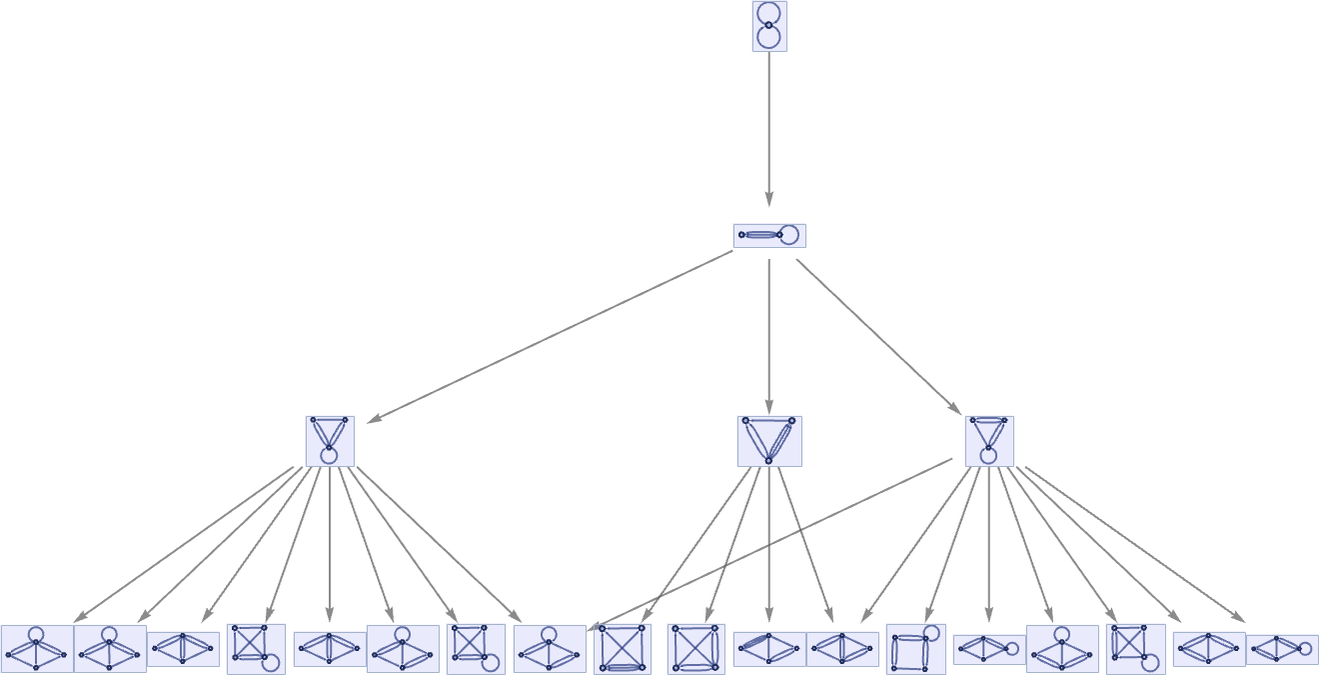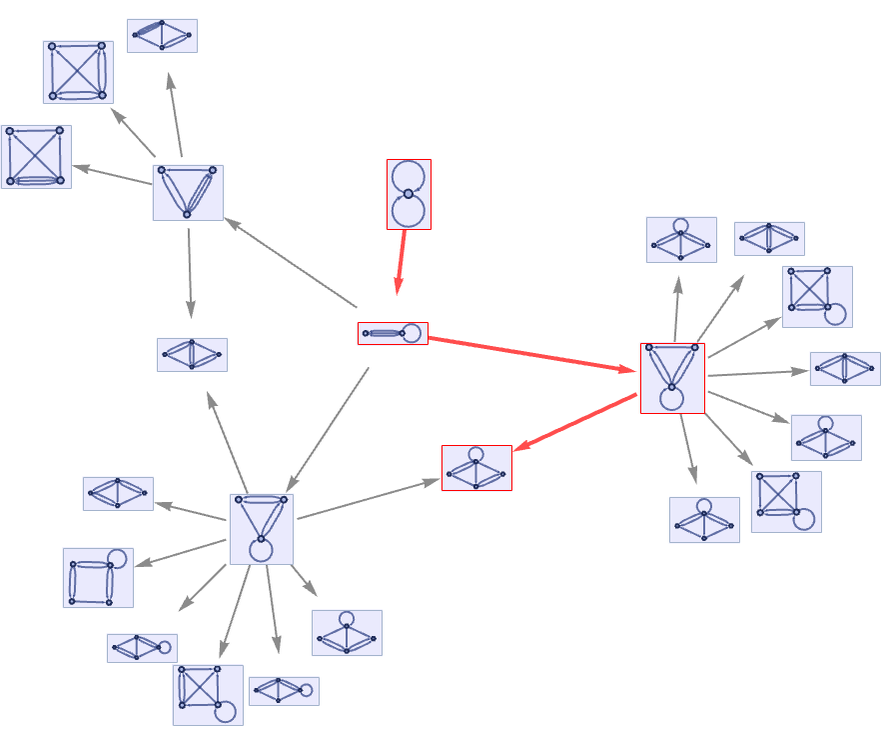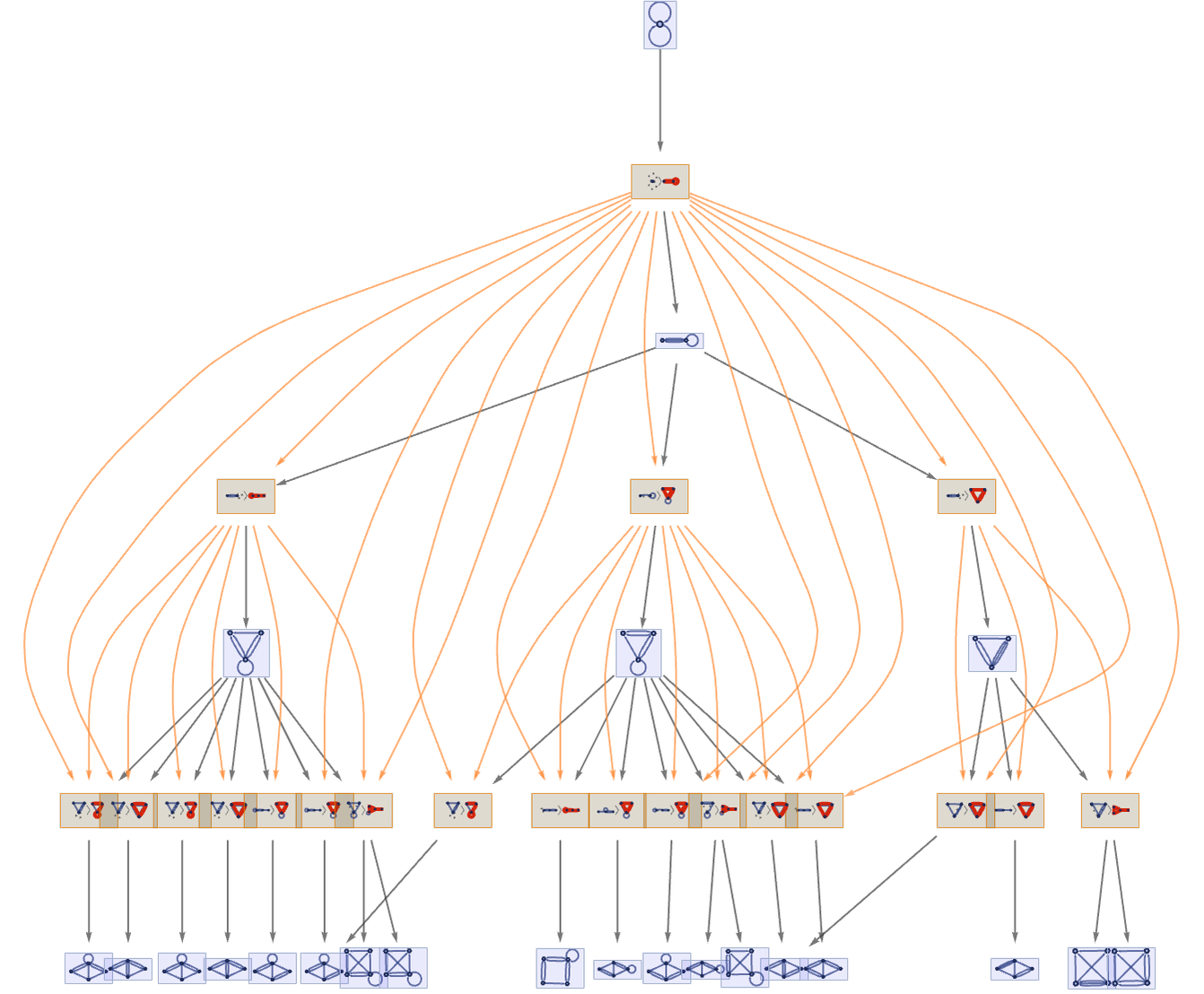Just like for the string substitution systems of section 5, we can construct multiway systems [1:5.6] for our models, in which we include a separate path for every possible updating event that can occur:

For string systems, it is straightforward to determine when states in the system should be merged: one just has see whether the strings corresponding to them are identical. For our systems, it is more complicated: we have to determine whether the hypergraphs associated with states are isomorphic [85], in the sense that they are structurally the same, independent of how their nodes might be labeled.
Continuing one more step with our rule, we see some cases of merging:

Here is an alternative rendering, now also showing the particular path obtained by following our “standard updating order”:

In general, each path in the multiway system corresponds to a possible sequence of updating events—here shown along with the causal relationships that exist between them:

 download pdf
download pdf  ARXIV
ARXIV peer review
peer review